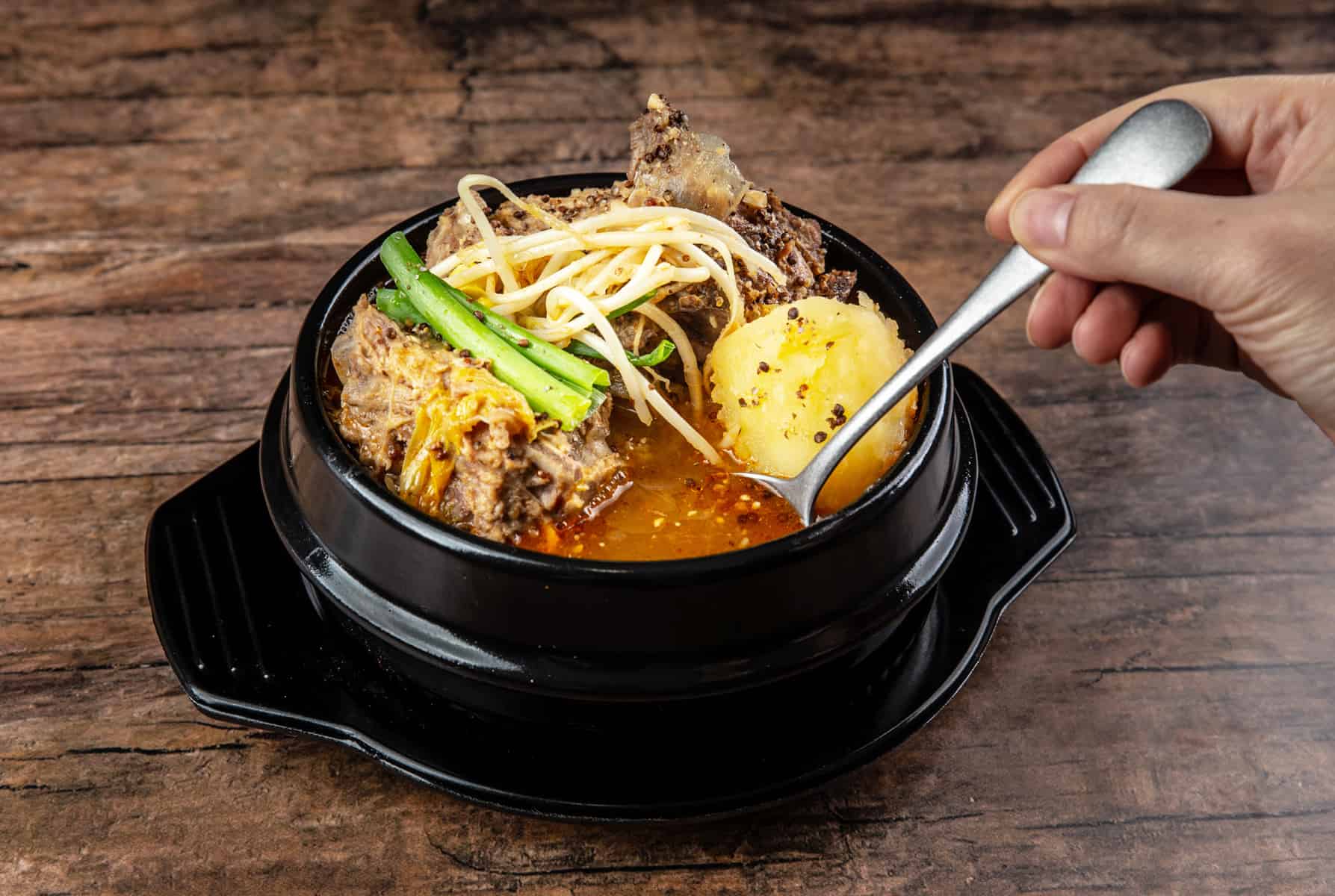newtownrrt.org – Gamjatang, a traditional Korean pork bone soup, is a beloved comfort food known for its rich flavors and nourishing qualities. This robust and spicy soup features tender pork bones and hearty potatoes, making it a staple in Korean households and restaurants alike. This article delves into the history, ingredients, and preparation of Gamjatang, highlighting why it remains a favorite among Korean dishes.
History and Cultural Significance
Gamjatang has its roots in the Korean farming communities, where it served as a hearty meal to sustain hard-working farmers. The soup is believed to have originated in the southern regions of Korea, particularly in Jeolla Province. It was traditionally made with leftover pork bones, turning an otherwise humble ingredient into a flavorful and satisfying dish.
Over time, Gamjatang has become a popular dish throughout Korea, enjoyed for its warming qualities and depth of flavor. It is often consumed during colder months or as a hangover remedy, thanks to its comforting and nutritious properties.
Ingredients and Preparation
The key to a delicious Gamjatang lies in the slow simmering of pork bones, which releases rich flavors and nutrients. The soup is characterized by its spicy and savory broth, complemented by tender meat and soft potatoes.
Key Ingredients
- Pork Neck Bones: These bones are the cornerstone of Gamjatang, providing the soup with its rich and meaty base.
- Potatoes: Potatoes add heartiness to the dish, absorbing the flavors of the broth.
- Spices and Seasonings: Key seasonings include gochugaru (Korean red pepper flakes), doenjang (fermented soybean paste), and gochujang (red chili paste) for a spicy kick.
- Vegetables: Napa cabbage, perilla leaves, and green onions are commonly added for texture and freshness.
- Perilla Seeds: Ground perilla seeds contribute a unique nutty flavor and are a traditional addition to the soup.
Preparation Steps
- Preparing the Pork Bones: Clean and soak the pork bones in cold water to remove impurities. Boil them briefly, then rinse and set aside.
- Making the Broth: In a large pot, simmer the pork bones with water for several hours. This slow cooking process extracts the marrow and flavors, creating a hearty broth.
- Seasoning the Broth: Add gochugaru, gochujang, and doenjang to the broth, adjusting the spice level to taste. Include garlic and ginger for additional flavor.
- Adding Vegetables and Potatoes: Once the broth is well-seasoned, add potatoes and simmer until tender. Then, add napa cabbage and perilla leaves.
- Finishing Touches: Just before serving, stir in ground perilla seeds and garnish with chopped green onions for a fresh burst of flavor.
Conclusion
Gamjatang is more than just a soup; it’s a culinary experience that embodies the warmth and richness of Korean cuisine. With its spicy broth, tender pork, and hearty potatoes, Gamjatang is a dish that satisfies both the palate and the soul. Whether enjoyed at home or in a bustling Korean restaurant, this traditional soup remains a comforting and delicious reminder of Korea’s vibrant food culture.
